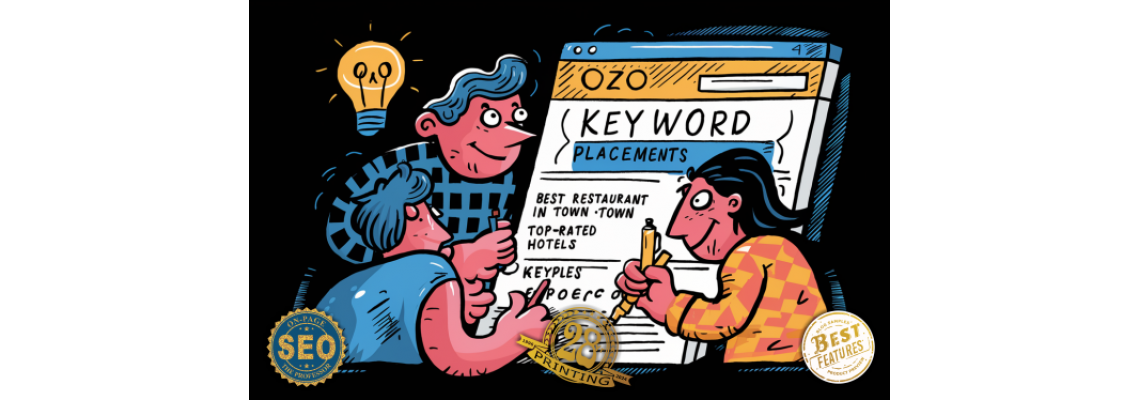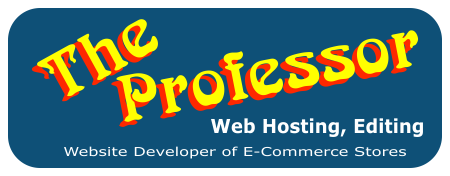
Keywords are the cornerstone of on-page SEO, guiding search engines to understand the relevance of your content to users' queries.
Once you’ve identified the keywords you want to target, the next step is strategically placing them throughout your website to maximize their impact. This process involves optimizing different parts of your website's pages to ensure that both search engines and users can easily identify the relevance of your content.In this in-depth guide, we’ll explore where and how to insert your chosen keywords across your website.
1. Title Tags
Why It Matters: The title tag is one of the most important on-page SEO elements. It’s the first thing users see on search engine results pages (SERPs), and it plays a significant role in determining click-through rates.
How to Optimize:
- Primary Keyword Placement: Always include your primary keyword as close to the beginning of the title tag as possible. For example, if your primary keyword is “affordable SEO services,” your title could be “Affordable SEO Services for Small Businesses.”
- Length Considerations: Keep your title tags under 60 characters to ensure they are fully displayed in SERPs.
- Avoid Keyword Stuffing: Don’t cram multiple keywords into your title tag. It should read naturally and appeal to the user.
Example:
Before: “Home | ABC Company”
After: “Affordable SEO Services | Boost Your Website Ranking Today”
2. Meta Descriptions
Why It Matters: Meta descriptions don’t directly affect rankings, but they do influence click-through rates, which can indirectly impact your SEO performance. A well-crafted meta description can entice users to click on your link over others.
How to Optimize:
- Primary and Secondary Keywords: Include your primary keyword, and if space allows, a secondary keyword in the meta description.
- Compelling Copy: The description should be a concise, compelling summary of the page content, urging users to take action. Keep it under 160 characters.
- Use Active Language: Words like “discover,” “learn,” “boost,” and “get started” can be effective.
Example:
Before: “Welcome to our website. We offer a wide range of services.”
After: “Discover affordable SEO services to boost your website ranking. Get started with our expert team today!”
3. Headings (H1, H2, H3, etc.)
Why It Matters: Headings structure your content and help search engines understand the hierarchy and relevance of your information. The H1 tag is usually the main title of the page and should clearly indicate the topic.
How to Optimize:
- H1 Tag: Your primary keyword should be in the H1 tag, which serves as the main heading of the page. Each page should have only one H1 tag.
- H2 and H3 Tags: Use secondary and related keywords in your H2 and H3 tags. These subheadings help organize your content and make it easier for both users and search engines to navigate.
- Natural Flow: Headings should flow naturally and enhance readability, not just for SEO purposes.
Example:
H1: “Affordable SEO Services for Small Businesses”
H2: “Why SEO Matters for Your Business”
H3: “How Our SEO Services Can Help You Succeed”
4. URL Structure
Why It Matters: A clean and keyword-rich URL is important for both user experience and SEO. It gives both search engines and users an idea of what the page is about.
How to Optimize:
- Primary Keyword: Include the primary keyword in the URL. It should be short, descriptive, and separated by hyphens.
- Avoid Stop Words: Words like “and,” “the,” and “of” are generally unnecessary in URLs.
- Consistent Format: Maintain a consistent, readable format across your site.
Example:
Before: “www.example.com/services/123456789”
After: “www.example.com/affordable-seo-services”
5. Content Body
Why It Matters: The content body is where you provide value to your users. It’s also where you have the most opportunities to naturally incorporate your keywords.
How to Optimize:
- Primary Keyword in the First 100 Words: Ideally, your primary keyword should appear within the first 100 words of your content.
- Secondary Keywords: Sprinkle secondary and related keywords throughout the content, ensuring they fit naturally.
- Keyword Density: Avoid overstuffing. Aim for a keyword density of about 1-2% for the primary keyword, but focus on creating valuable content that reads well.
- Synonyms and LSI Keywords: Use synonyms and Latent Semantic Indexing (LSI) keywords to reinforce the topic without repetitive language.
Example:
If your primary keyword is “affordable SEO services,” your content could start like this:
“Small businesses often struggle to find affordable SEO services that deliver results. Our team specializes in cost-effective solutions designed to boost your website’s visibility.”
6. Internal Links
Why It Matters: Internal linking helps distribute page authority across your site and guides users to related content. It also helps search engines crawl your site more effectively.
How to Optimize:
- Anchor Text: Use keyword-rich anchor text that is relevant to the page you’re linking to.
- Strategic Placement: Link to relevant pages within the content body where it makes sense to do so. Avoid forcing links that don’t add value.
- Balance: Don’t overdo it—too many internal links can be overwhelming. Aim for 2-3 internal links per 1000 words of content.
Example:
“Looking to improve your website’s visibility? Check out our affordable SEO services to get started.”
7. Image Alt Text
Why It Matters: Alt text is used by search engines to understand what an image is about, and it’s also important for accessibility.
How to Optimize:
- Descriptive Text: Write a brief, descriptive alt text that includes the primary keyword where relevant.
- Avoid Keyword Stuffing: The alt text should describe the image clearly and concisely, without forcing in keywords.
- All Images: Ensure every image on your page has optimized alt text.
Example:
Before: “IMG_1234”
After: “Affordable SEO services infographic”
8. External Links
Why It Matters: External links to authoritative sites can boost your page’s credibility and help search engines understand your content’s context.
How to Optimize:
- Relevant Anchor Text: When linking to an external source, use relevant, keyword-rich anchor text.
- Authority and Relevance: Only link to high-authority, relevant sites to reinforce your content’s credibility.
- Open in New Tab: Ensure external links open in a new tab to keep users on your site.
Example:
“When implementing affordable SEO services, it’s important to follow Google’s Webmaster Guidelines to avoid penalties.”
9. Schema Markup
Why It Matters: Schema markup helps search engines understand the context of your content, leading to enhanced SERP features like rich snippets.
How to Optimize:
- Relevant Schema Types: Implement schema markup that’s relevant to your content type, such as Article, Product, Local Business, or Review.
- Include Keywords: Ensure your primary keyword appears within the schema markup where appropriate.
- Use Structured Data Testing Tools: After implementing schema, use Google’s Structured Data Testing Tool to ensure it’s correctly set up.
Example:
For a local business offering affordable SEO services, use LocalBusiness schema markup and include details like your business name, address, phone number, and services offered.
10. Footer Links and Information
Why It Matters: The footer is a consistent area across your site where you can reinforce keyword relevance, particularly for local SEO.
How to Optimize:
- Business Name and Primary Keyword: Include your business name and primary keyword in the footer text.
- Local Keywords: If applicable, include your local keywords here, particularly for location-based services.
- Consistent NAP Information: Ensure your Name, Address, and Phone number (NAP) information is consistent across all pages.
Example:
“© 2024 ABC Company | Affordable SEO Services in Southern WV | All Rights Reserved.”
Conclusion
Effective keyword placement is essential for maximizing your website’s visibility in search engines. By strategically inserting keywords into these key areas—title tags, meta descriptions, headings, URLs, content body, internal and external links, image alt text, schema markup, and footers—you can significantly improve your site’s SEO performance. Remember, the goal is to create content that is valuable to your audience while ensuring that it’s optimized for search engines. With the right balance, you can drive more traffic to your site and achieve your digital marketing goals.
Incorporate these practices consistently across your website, and you’ll be well on your way to enhancing your on-page SEO and improving your search engine rankings.

Leave a Comment